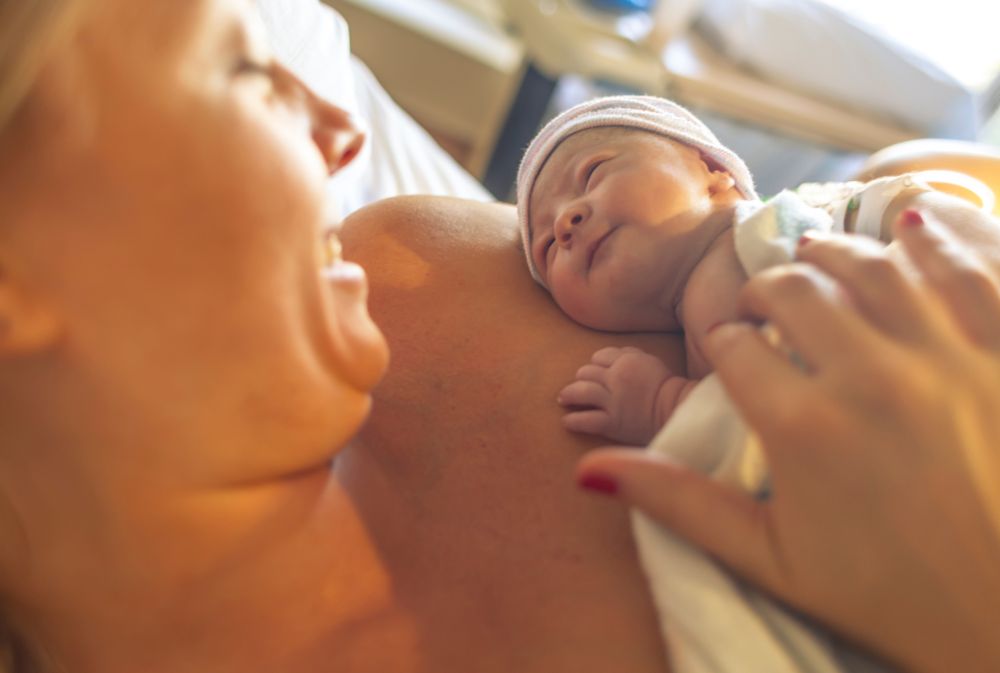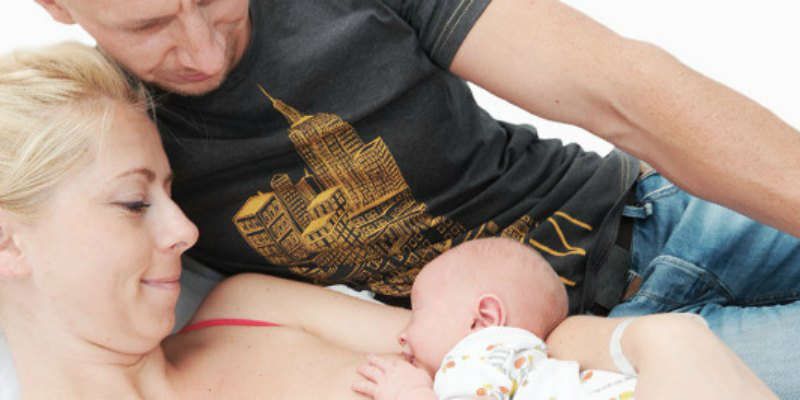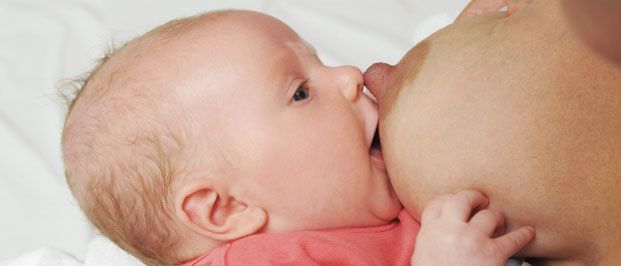How to breastfeed
Breastfeeding is a completely natural process, but it is something mums and babies have to learn to do together, getting the positioning and attachment** right can take time. Most mums who have successfully breastfed will tell you that the first few days were tricky, but you will be really glad if you keep at it. Lots of mums say they are sad they gave up so soon.
**The term ‘positioning’ refers to how you sit or lie and how you hold your baby and the term ‘attachment’ refers to how your baby gets her mouth around your nipple and breast. She needs enough breast to get a good feed and you need to be comfortable.
Holding your baby in skin to skin contact after birth and allowing him/her to spend time licking and nuzzling at your breast will help your baby instinctively ‘learn’ how to breastfeed. Your midwife will help you hold your baby in a way that will make it easier for him/her to feed effectively. This is important for both you and baby as it will prevent you getting sore and will make sure your baby gets enough milk to help him/her grow. The more feeds your baby has, the more milk you will make. In the early days your baby may feed very often, particularly in the evening time. Although this can be challenging for you, it is normal for babies to do this as it sets up your milk supply for the future.

Top tips for getting off to a good breastfeeding start
- Start off with lots of skin-to-skin contact. Watch for when your baby gives you signs that she wants a feed and take your time. The first feed is important, you’ll both gain confidence if it goes well
- Feed her as often as she wants and for as long as she wants. This will help you make plenty of milk
- Don’t give your baby bottles in the first few days. It might be tempting if you are tired, but your baby needs to feed from your breast to get your milk supply going. Introducing a bottle can also be confusing for your baby because she will suck differently on a bottle
- Getting the positioning and attachment right is the key to successful breastfeeding. You may need help to do this, either in hospital or when you get home. Don’t be afraid to ask for help
You will soon be able to tell if your baby is breastfeeding well. Her mouth will be wide open and you will be able to see her feeding rhythmically and swallowing. You should be comfortable during the feed.
How to breastfeed
Breastfeeding should not be painful if your baby is well attached. If feeding is hurting make sure you ask for help from your midwife or health visitor as soon as possible. The following tips may help you & your baby find a good technique:
- Hold your baby really close to your body
- Support your baby’s neck, shoulders and back making sure she can easily tilt her head back
- Your baby’s head & body should be facing the same way so she is not twisted at all
- Your baby’s nose needs to be opposite your nipple so that she can reach up and attach well.
Positions
There are lots of different positions for breastfeeding. Ask your midwife to help you find whichposition feels the best for you and your baby.
When your baby is in a good position they can attach correctly at the breast and feed effectively. It’s important to find a position where your breast hangs naturally and to tuck your baby in close. You may find ‘laid back’ position comfortable – and useful in the early days, if you and your baby have difficulty attaching.
Cross cradle
This is where your baby is held in the opposite arm to the breast that she is feeding from allowing her more flexibility to move her head more freely.
Side lying
This is where you can lay down on your side whilst your baby also lays on her side in front of you.
Laid back or biological nurturing
This is where you lay on your back, making sure you are comfortable with pillows propping you up from behind whilst your baby lays on top of you on her stomach.
Under arm hold
This is where you position your baby under the breast she will be feeding on with her feet and bottom quite far back.
Cradle hold
This is where your baby is held in the arm on the same side as the breast she is feeding from. Be careful to make sure her head is free and not squashed in the crook of your arm.
This video runs through the five breastfeeding positions
What is correct attachment?
Attachment is when your baby latches on to the breast to feed. We’ve broken the process down into simple steps with photographs to help you
Step 1: Bring your baby in close

Your baby shouldn't have to stretch to reach your breast.
Their head, neck, chest and hips should all face the same direction – it's difficult for your baby to swallow if their body is twisted. Their head should be tilted back slightly.
Step 2: Baby's nose to your nipple

Their nose should be level with your nipple, so that when they attempt to attach your nipple they can safely reach the back of their mouth
Step 3: Make sure their head is free to move

Support your baby behind the neck and shoulder, making sure they can move their head freely.
Watch your baby instinctively tilt their head back and open their mouth wide.
Bring your baby swiftly to your breast (not the other way round). Their tongue and lower lip should make contact with your breast first.
Step 4: Watch for a wide open mouth

Their chin should be touching your breast and their cheeks should be full and rounded.
If any of your areola (the darker area around your nipple) is visible, more should be seen above your baby's top lip than below their bottom lip.
Your baby should be calm.
Your baby should be sucking rhythmically, swallowing and pausing during the feed.
Any discomfort you feel should only be for the first few seconds. If breastfeeding is sore for you throughout a feed, you may need to ask for help, as the attachment may not be quite right.
In these video, the first video shows a breastfeeding counsellor helps a mother with her positioning and attachment whilst breastfeeding and show. The second video shows ineffective attachment.
Quick Guide to Attachment
C Close - pull baby close to your body
H Head free - to tilt back. No hands on the head. Support the neck instead
I In line – Make sure head and body are in a line. Baby shouldn’t be twisting their neck at the breast.
N Nipple pointing up the nose – to ensure a nice deep latch.
S Sustainable – Are you comfortable? Will this be comfortable for the whole feed?
To help to remember this, think CHINS? Bring baby to the breast chin first.
And a reminder to relax your shoulders.
Biological Nurturing
This video clip begins with a still image for about 30 seconds. In this time you can note the reclined and fully supported position of the mother and the baby 'tummy ON mummy' working with gravity. This mother seems to be enjoying holding her sleeping baby and the initiation of breastfeeding is not hurried and set in a relaxed atmosphere.
Attaching Your Baby at the Breast
Good attachment will help a baby get more milk and make breastfeeding more comfortable. This video shows why good attachment is so important to breastfeeding success and what a mother can do to deeply attach her baby to her breast.
This video is intended primarily for mothers in the developing world, but may be helpful to breastfeeding mothers worldwide




